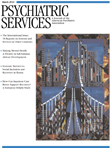HHS Report on CHIPRA's First Year Highlights Gains in Coverage for Children
Enrollment of children in Medicaid and the Children's Health Insurance Program (CHIP) increased by 2.6 million during federal fiscal year 2009. Over the course of the year, these programs served nearly 40 million children, according to a report released in February by the Department of Health and Human Services (HHS) exactly one year after President Obama signed the Children's Health Insurance Program Reauthorization Act (CHIPRA). Despite these gains, it is estimated that five million of the nation's 7.3 million uninsured children are eligible for Medicaid or CHIP but are not yet enrolled.
Features of CHIPRA designed to boost enrollment include a new Express Lane Eligibility (ELE) option that allows state Medicaid and CHIP agencies to borrow and rely on eligibility findings from other need-based programs, such as Head Start and the National School Lunch Program, and to use information from other databases, such as tax records, to identify eligible children for outreach efforts. In 2009 three states (New Jersey, Alabama, and Louisiana) received approval to use the ELE option in their Medicaid programs. Many more states have expressed interest in the option for both Medicaid and CHIP, and the approvals that are expected in 2010 will help to identify and enroll a large number of uninsured children.
Officials in states that receive 2010 approval for the ELE option may find guidance in a new issue brief from the Kaiser Foundation's Commission on Medicaid and the Uninsured. The brief provides an overview of eight key decisions that a state will face in designing an ELE initiative. Early decisions involve how to determine which state agencies can and should be tapped as appropriate sources of data for identifying eligible children and determining their eligibility and then how to structure a collaboration with these agencies that imposes the least burden on them and that falls within their allowable activities. In addition, technology plays a key role in simplifying the data-sharing and enrollment processes, and states must decide which electronic systems to implement or upgrade and whether they can use specific federal matching or incentive funds that support such improvements. The 11-page brief, Building an Express Lane Eligibility Initiative: A Roadmap of Key Decisions for States, is available on the Kaiser Web site at www.kff.org/medicaid/8043.cfm .
The HHS report describes another CHIPRA feature designed to boost enrollment—performance bonuses for states that meet established targets. These bonus payments help to offset the costs of expanding coverage to previously uninsured children. In December 2009 HHS Secretary Kathleen Sebelius awarded bonuses totaling nearly $73 million to nine states. This was a strong showing, the HHS report notes, because of the "aggressive" 2009 enrollment targets established by CHIPRA and because states had less than a year to meet these goals. Thus it is likely that even more states will qualify for bonus payments in 2010.
Enrollment of the lowest-income uninsured children is a key goal of CHIPRA, and the 2009 gains were greatest in this group. Of the 2.6 million newly covered children, 2.2 million were enrolled in "regular" Medicaid, as opposed to CHIP-funded Medicaid expansions or separate CHIP programs. States' ability to enroll more children during a year of record budget shortfalls is largely attributable to increased federal matching payments to state Medicaid programs that were made available through the American Recovery and Reinvestment Act, which was signed into law less than two weeks after CHIPRA.
Medicaid and CHIP are important sources of coverage for children from all racial and ethnic groups. However, the programs play an especially critical role for African-American and Hispanic children, who are more likely than white children to be from low-income families. Children from minority groups experience well-documented disparities in access to health care, and a recent data analysis conducted by the Kaiser Family Foundation examined whether Medicaid is helping to reduce them. Disparities were no more likely among children enrolled in Medicaid than among privately insured children on the four indicators examined: has a usual source of care, made at least one past-year ambulatory medical visit, experienced a problem getting needed care, and had a problem seeing a specialist. Insurance coverage—both private and public—improved access for African-American and Hispanic children but generally did not significantly narrow disparities in access. The 14-page Kaiser report, Racial/Ethnic Disparities in Access to Care Among Children: How Does Medicaid Do in Closing the Gaps?, examines data for more than 15,000 children from the 2003 and 2004 Medical Expenditure Panel Survey. It is available at www.kff.org/minorityhealth/upload/8031.pdf .
In releasing the report on achievements under CHIPRA, HHS Secretary Sebelius announced "The Secretary's Challenge: Connecting Kids to Coverage," a five-year campaign that calls on government officials at all levels, representatives of community organizations, faith leaders, and concerned individuals to find and enroll the five million children who are eligible but remain uncovered. The 20-page HHS report, CHIPRA One Year Later: Connecting Kids to Coverage, is available at www.insurekidsnow.gov .



